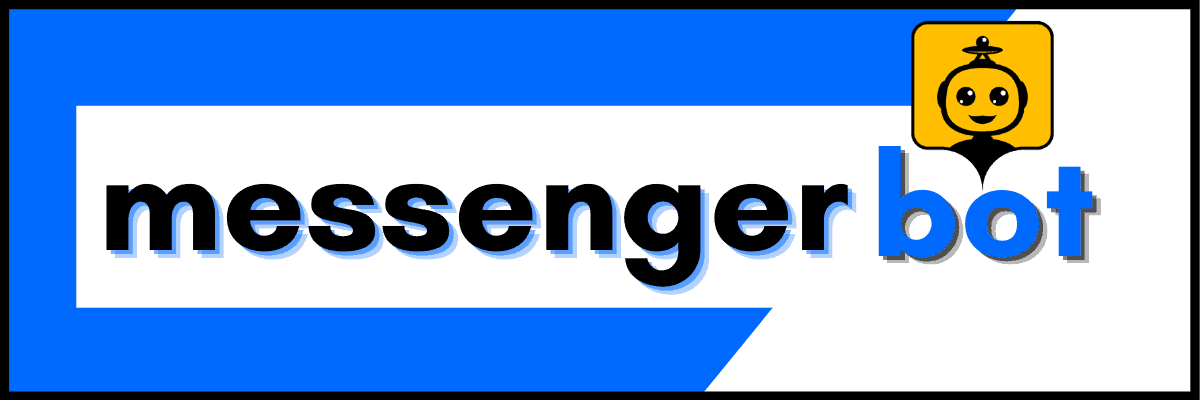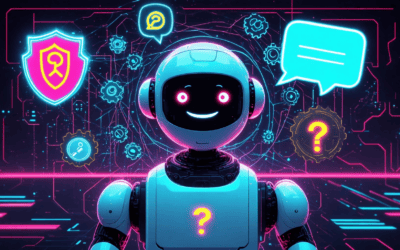In today’s rapidly evolving digital landscape, chatbots in the insurance industry are revolutionizing the way companies engage with their customers. This article delves into the transformative role of chatbots for customer service, exploring how they enhance customer interactions and streamline support processes. We will provide an overview of the various types of chatbots utilized in the insurance sector, highlighting their benefits and the statistics that showcase their growing adoption. Additionally, we will compare the effectiveness of customer care chatbots versus customer support chatbots, and analyze how artificial intelligence is being integrated into these tools to improve service delivery. As we navigate through real-world insurance chatbot examples and case studies, you will gain insights into the best practices and future trends shaping the use of chatbots in insurance. Join us as we uncover the potential of insurance chatbots and their impact on customer satisfaction and operational efficiency.
How are chatbots used in insurance?
Overview of chatbots in the insurance industry
Chatbots are revolutionizing the insurance industry by enhancing customer service and streamlining operations. These customer service chatbots are designed to provide immediate assistance, allowing insurers to engage with clients effectively. By leveraging artificial intelligence, chatbots can handle a variety of tasks, from answering queries to managing claims, making them invaluable in today’s fast-paced digital environment.
Benefits of chatbots for customer service
Here are five significant use cases of chatbots in insurance:
- Claims Processing: Chatbots facilitate the claims process by allowing customers to file claims directly through messaging platforms. This automation reduces the time taken to process claims, with studies indicating that 44% of customers prefer using chatbots for this purpose (Source: Accenture).
- Customer Support: Insurance chatbots provide 24/7 customer support, answering frequently asked questions and guiding users through policy details. This immediate access to information improves customer satisfaction and reduces the workload on human agents (Source: McKinsey).
- Policy Management: Chatbots assist customers in managing their policies by providing updates on coverage, premium payments, and renewal reminders. This proactive communication helps clients stay informed and engaged with their insurance plans (Source: Deloitte).
- Personalized Recommendations: Utilizing AI and machine learning, chatbots can analyze customer data to offer personalized insurance product recommendations. This tailored approach enhances user experience and increases conversion rates (Source: Forrester).
- Fraud Detection: Advanced chatbots can help identify potentially fraudulent claims by analyzing patterns and flagging suspicious activities. This capability not only protects insurers but also ensures that legitimate claims are processed efficiently (Source: PwC).
In conclusion, the integration of chatbots in the insurance sector not only improves operational efficiency but also enhances customer engagement and satisfaction. As technology continues to evolve, the role of chatbots is expected to expand, making them an essential tool for insurers looking to innovate and meet customer expectations.

How are chatbots used in insurance?
Chatbots in the insurance industry are revolutionizing the way companies interact with their customers. These AI-driven tools serve as a bridge between insurers and policyholders, providing instant responses to inquiries, assisting with claims processing, and enhancing overall customer experience. By integrating chatbots into their operations, insurance companies can offer 24/7 support, ensuring that customers receive timely assistance regardless of the hour. This automation not only streamlines communication but also significantly reduces operational costs, making it a win-win for both insurers and customers.
Overview of chatbots in the insurance industry
As of 2023, over 50 insurance companies in the United States have integrated chatbots into their operations, reflecting a growing trend in the industry towards automation and enhanced customer service. This shift is driven by the need for efficient customer interaction, with chatbots providing 24/7 support, handling inquiries, and streamlining claims processes. According to a report by McKinsey & Company, the use of AI-driven chatbots can reduce operational costs by up to 30% while improving customer satisfaction rates. Additionally, a study published in the Journal of Insurance Technology highlights that chatbots can handle up to 80% of routine customer inquiries, allowing human agents to focus on more complex issues. As the technology continues to evolve, it is expected that the number of insurers adopting chatbots will increase significantly, further transforming the insurance landscape.
Benefits of chatbots for customer service
Chatbots for customer service offer numerous advantages that enhance the overall customer experience in the insurance sector. One of the primary benefits is the ability to provide immediate responses to customer inquiries, which is crucial in an industry where timely information is essential. Customer care chatbots can assist with policy information, claims status updates, and general inquiries, significantly reducing wait times for customers.
Moreover, chatbots in customer service can be programmed to handle a wide range of tasks, from answering FAQs to guiding users through the claims process. This level of automation not only improves efficiency but also allows insurance companies to allocate their human resources more effectively. By utilizing customer support chatbots, insurers can ensure that their teams focus on more complex cases that require human intervention, thereby enhancing service quality.
In conclusion, the integration of chatbots in insurance is not just a trend but a strategic move towards improving customer service and operational efficiency. As more companies recognize the benefits of these AI-driven tools, the landscape of the insurance industry will continue to evolve, paving the way for a more responsive and customer-centric approach.
How are chatbots used in insurance?
Chatbots in the insurance industry are revolutionizing the way companies interact with their customers. By automating various processes, these chatbots for insurance enhance efficiency and improve customer satisfaction. Insurance chatbots can handle a range of tasks, from answering frequently asked questions to guiding users through complex claims processes. This not only streamlines operations but also allows human agents to focus on more intricate issues that require personal attention.
Overview of chatbots in the insurance industry
The integration of customer service chatbots in the insurance sector has become increasingly prevalent. These chatbots in customer service provide immediate responses to inquiries, significantly reducing wait times for customers. For instance, a customer care chatbot can assist users in understanding policy details, checking claim statuses, and even providing quotes for new policies. This level of accessibility is crucial in an industry where timely information can greatly impact customer decisions.
Benefits of chatbots for customer service
Implementing chatbots in insurance offers numerous benefits, particularly in enhancing customer service. One of the primary advantages is the 24/7 availability of these insurance chatbots, which ensures that customers can receive assistance at any time. This constant availability leads to improved customer satisfaction and loyalty.
Moreover, chatbots for customer service can handle multiple inquiries simultaneously, which alleviates the burden on human agents during peak times. This efficiency not only speeds up response times but also reduces operational costs for insurance companies. Additionally, the data collected by these chatbots can provide valuable insights into customer preferences and behaviors, allowing companies to tailor their services more effectively.
How many insurance companies use chatbots?
The adoption of chatbots in insurance is on the rise, with many companies recognizing their potential to enhance customer interactions. Recent statistics indicate that over 30% of insurance companies have integrated some form of chatbot technology into their operations. This trend is expected to grow as more companies seek to improve their customer service capabilities.
Statistics on chatbot adoption in the insurance sector
According to industry reports, the use of customer support chatbots has increased by 50% in the last two years alone. This surge is attributed to the growing demand for efficient customer service solutions and the need for insurance companies to remain competitive in a rapidly evolving market. As more organizations embrace digital transformation, the reliance on chatbots for insurance is likely to expand further.
Case studies of leading insurance companies utilizing chatbots
Several leading insurance companies have successfully implemented insurance chatbots to enhance their customer service. For example, GEICO has introduced a chatbot in insurance that assists customers with policy inquiries and claims processing. Similarly, Allstate utilizes a customer care chatbot to provide instant support to users, significantly improving their overall customer experience. These case studies highlight the effectiveness of chatbots in customer service and their role in shaping the future of the insurance industry.
How are chatbots used in insurance?
Chatbots in the insurance industry are transforming the way companies interact with their customers. These customer service chatbots are designed to handle a variety of tasks, from answering policy inquiries to assisting with claims processing. By leveraging artificial intelligence, chatbots can provide immediate responses to customer queries, ensuring that clients receive the information they need without long wait times. This not only enhances customer satisfaction but also streamlines operations within insurance companies.
Overview of chatbots in the insurance industry
The integration of chatbots in insurance has become increasingly prevalent as companies seek to improve efficiency and customer engagement. These bots can operate 24/7, providing support and information at any time. For instance, a chatbot for insurance can help customers understand their coverage options, file claims, and even receive updates on their claims status, all through a simple chat interface.
Benefits of chatbots for customer service
One of the primary benefits of implementing chatbots for customer service in the insurance sector is the significant reduction in response times. Customers no longer need to wait for a representative to become available; instead, they can receive instant answers to their questions. This not only improves customer satisfaction but also allows human agents to focus on more complex inquiries, enhancing overall service quality.
Moreover, customer care chatbots can gather valuable data on customer interactions, helping insurance companies to better understand their clients’ needs and preferences. This data can be leveraged to tailor services and improve marketing strategies, ultimately driving growth and customer loyalty.
How many insurance companies use chatbots?
The adoption of chatbots in the insurance sector is on the rise, with many companies recognizing their potential to enhance customer interactions. Statistics indicate that a growing number of insurance providers are integrating these technologies into their operations.
Statistics on chatbot adoption in the insurance sector
Recent studies show that approximately 30% of insurance companies have implemented some form of chatbot technology. This trend is expected to continue as more firms recognize the benefits of chatbots in customer service. The increasing reliance on digital solutions in the insurance industry highlights the importance of staying competitive through innovative technologies.
Case studies of leading insurance companies utilizing chatbots
Several leading insurance companies have successfully integrated chatbots into their customer service strategies. For example, Brain Pod AI has developed advanced chatbot solutions that enhance user engagement and streamline operations. These implementations serve as a testament to the effectiveness of chatbots in improving customer experiences and operational efficiency in the insurance sector.

How are chatbots used in insurance?
Chatbots are increasingly becoming an integral part of the insurance industry, providing innovative solutions that enhance customer interactions and streamline operations. These chatbots in insurance serve various functions, from handling customer inquiries to assisting with claims processing, ultimately improving the overall customer experience.
Overview of chatbots in the insurance industry
In the insurance sector, chatbots are designed to facilitate customer service by providing instant responses to policyholders’ questions. These customer care chatbots can assist with various tasks, including policy inquiries, premium calculations, and claims status updates. By leveraging AI technology, chatbots can analyze user data and provide personalized interactions, making them a valuable asset for insurance companies.
Benefits of chatbots for customer service
The implementation of chatbots in the insurance industry offers numerous benefits, particularly in enhancing customer service. Here are some key advantages:
- 24/7 Availability: Chatbots provide round-the-clock support, ensuring that customers can access assistance at any time, which is crucial for urgent inquiries.
- Cost Efficiency: By automating routine inquiries, insurance companies can significantly reduce operational costs associated with customer support.
- Improved Response Times: Chatbots can handle multiple inquiries simultaneously, leading to faster response times and increased customer satisfaction.
- Data Collection and Insights: Chatbots gather valuable data on customer interactions, helping insurers understand customer needs and preferences better.
How many insurance companies use chatbots?
The adoption of chatbots in the insurance sector is on the rise, with many companies recognizing their potential to enhance customer engagement and operational efficiency. According to recent statistics, approximately 30% of insurance companies have integrated chatbots into their customer service strategies, reflecting a growing trend towards automation in the industry.
Statistics on chatbot adoption in the insurance sector
As the demand for efficient customer service solutions increases, the use of chatbots for insurance is expected to grow. A report by Brain Pod AI indicates that the chatbot market in the insurance industry is projected to expand by 25% annually, driven by advancements in AI technology and increasing consumer expectations.
Case studies of leading insurance companies utilizing chatbots
Several leading insurance companies have successfully implemented chatbots to improve their customer service. For instance, GEICO utilizes a chatbot to assist customers with policy inquiries and claims processing, resulting in a significant reduction in call center volume. Similarly, Allstate has integrated a chatbot to provide personalized policy recommendations, enhancing customer engagement and satisfaction.
How are chatbots used in insurance?
Chatbots are transforming the insurance industry by providing innovative solutions that enhance customer interactions and streamline operations. These chatbots in insurance serve various functions, from answering customer inquiries to assisting with claims processing. By leveraging artificial intelligence, insurance chatbots can deliver personalized experiences, making them invaluable tools for both insurers and policyholders.
Overview of chatbots in the insurance industry
In the insurance sector, chatbots are deployed to improve efficiency and customer satisfaction. They can handle a multitude of tasks, such as providing quotes, answering policy-related questions, and guiding users through the claims process. The integration of customer service chatbots allows insurance companies to offer 24/7 support, ensuring that customers receive timely assistance regardless of the hour. This not only enhances the customer experience but also reduces operational costs for insurers.
Benefits of chatbots for customer service
The benefits of implementing chatbots for customer service in the insurance industry are numerous. Firstly, they significantly reduce response times, allowing customers to receive immediate answers to their queries. This quick access to information fosters a sense of trust and reliability in the insurance provider. Secondly, chatbots can handle multiple inquiries simultaneously, which alleviates the workload on human agents and allows them to focus on more complex issues.
Moreover, customer care chatbots can gather valuable data on customer interactions, enabling insurance companies to analyze trends and improve their services. This data-driven approach helps in tailoring offerings to meet customer needs more effectively. Additionally, by utilizing chatbots in customer service, insurers can enhance their engagement strategies, leading to higher customer retention rates.
How many insurance companies use chatbots?
The adoption of chatbots in the insurance sector has been steadily increasing, with many companies recognizing their potential to enhance customer service and operational efficiency. According to recent statistics, approximately 30% of insurance companies have integrated chatbots into their customer service strategies. This trend is expected to grow as more insurers seek to leverage technology to improve their service delivery.
Statistics on chatbot adoption in the insurance sector
As of 2022, a survey indicated that around 60% of insurance companies planned to implement or expand their use of chatbots within the next few years. This reflects a growing recognition of the importance of chatbots in insurance for improving customer interactions and streamlining processes. Major players in the industry, such as Allstate and Progressive, have already adopted chatbot technology to enhance their customer service capabilities.
Case studies of leading insurance companies utilizing chatbots
Several leading insurance companies have successfully implemented chatbots to improve their operations. For instance, Allstate’s insurance chatbot provides users with instant quotes and policy information, significantly reducing the time customers spend waiting for assistance. Similarly, Progressive’s chatbot assists users in navigating their policies and filing claims, showcasing the effectiveness of chatbots for insurance in enhancing customer experience.
These case studies highlight the transformative impact of chatbots in the insurance industry, demonstrating their ability to streamline processes and improve customer satisfaction.
How are chatbots used in insurance?
Chatbots are transforming the insurance industry by streamlining customer interactions and enhancing service delivery. These chatbots in insurance serve various functions, including answering queries, processing claims, and providing personalized policy recommendations. By leveraging artificial intelligence, insurance chatbots can operate 24/7, ensuring that customers receive timely assistance without the need for human intervention. This not only improves customer satisfaction but also reduces operational costs for insurance companies.
Overview of chatbots in the insurance industry
In the insurance sector, chatbots are utilized to automate routine tasks, allowing human agents to focus on more complex issues. They can handle inquiries related to policy details, premium calculations, and claim statuses. For instance, Brain Pod AI offers advanced chatbot solutions that can be integrated into insurance platforms, enhancing user engagement and operational efficiency. The adoption of customer service chatbots in insurance is on the rise, as companies seek to improve their responsiveness and customer experience.
Benefits of chatbots for customer service
The integration of chatbots for customer service in the insurance industry brings numerous benefits. Firstly, they provide instant responses to customer inquiries, significantly reducing wait times. This is particularly beneficial during peak hours when human agents may be overwhelmed. Secondly, chatbots can gather and analyze customer data to offer personalized recommendations, improving the overall customer experience. Additionally, they can assist in lead generation by engaging potential clients through interactive conversations. Overall, the use of chatbots in customer service not only enhances efficiency but also fosters stronger customer relationships.
How many insurance companies use chatbots?
Chatbot adoption in the insurance sector is rapidly increasing as companies recognize the value of automation in enhancing customer service. A significant percentage of insurance providers have implemented chatbots to streamline their operations and improve client interactions.
Statistics on chatbot adoption in the insurance sector
Recent studies indicate that over 30% of insurance companies have integrated chatbots into their customer service frameworks. This trend is expected to grow as more firms realize the potential of insurance chatbots to reduce costs and improve service delivery. The increasing reliance on digital solutions has made chatbots a vital component of modern insurance strategies.
Case studies of leading insurance companies utilizing chatbots
Several leading insurance companies have successfully implemented chatbots to enhance their customer service. For example, GEICO uses a chatbot to assist customers with policy inquiries and claims processing, resulting in improved customer satisfaction ratings. Similarly, Allstate has deployed a chatbot that provides personalized insurance quotes and policy information, showcasing the effectiveness of chatbots in insurance for engaging customers and streamlining operations.




